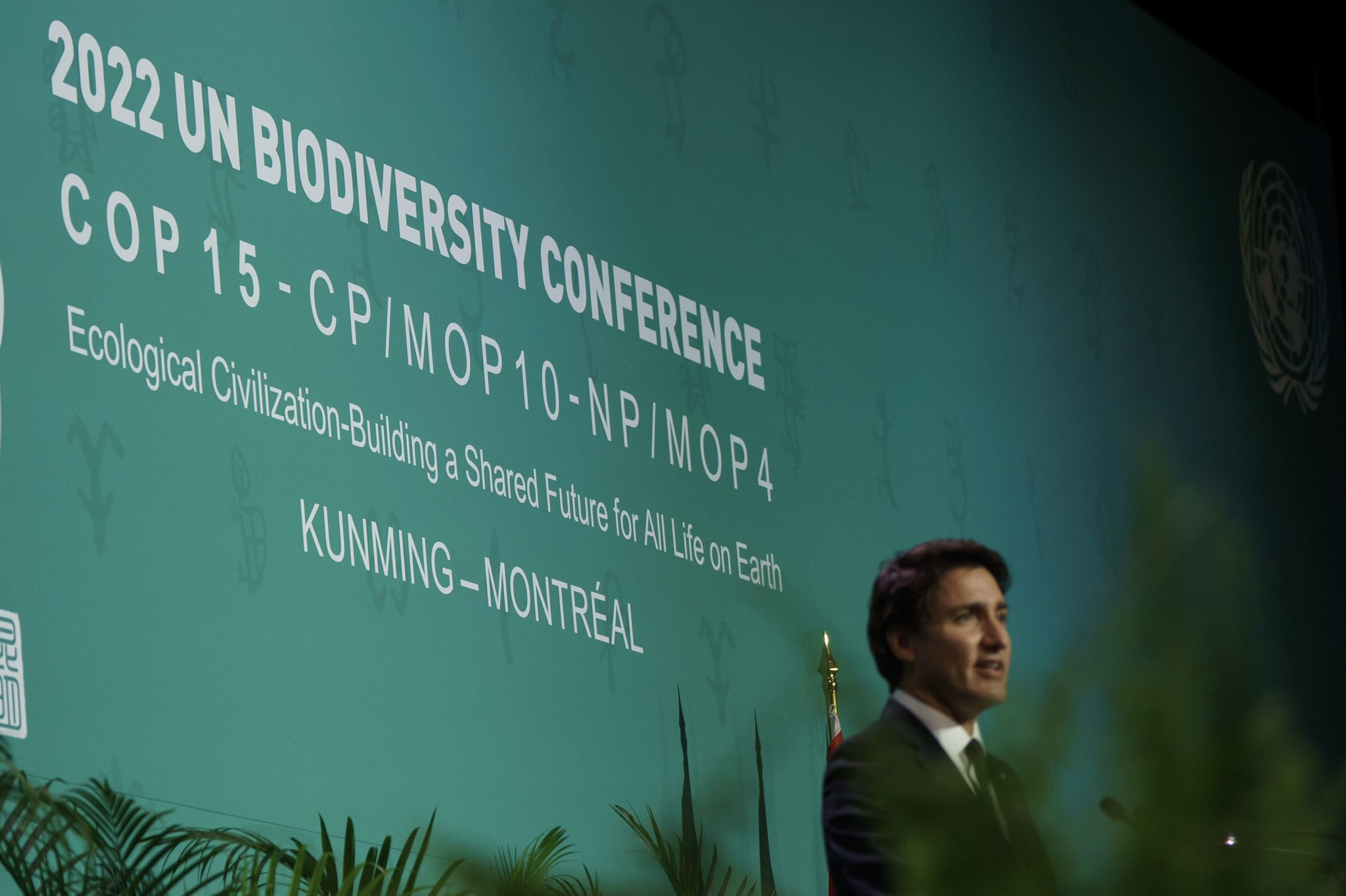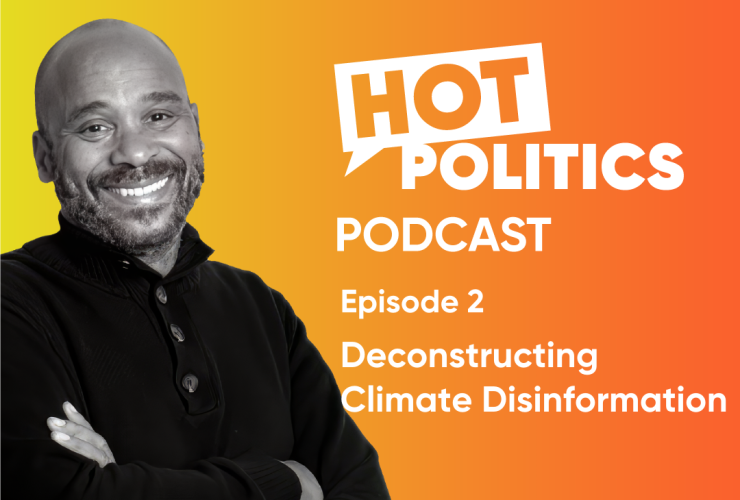The science is unequivocal: without immediate and monumental efforts to protect nature, we will face an existential threat humanity has not seen before.
It’s well understood that the more the planet warms, the more all forms of life will struggle to survive, but scientists are increasingly warning that we are on the brink of the world’s sixth mass extinction. The last mass extinction was 65 million years ago when an asteroid wiped out the dinosaurs. This time, it’s driven by habitat loss, caused by extractive industries like logging and mining, and climate change, caused by the relentless burning of fossil fuels.
In other words, human activity abetted by governments and polluting corporations is cooking the planet and all life on it to the point of extinction.
That’s why international delegates have landed in Montreal to negotiate a landmark deal, on the scale of the Paris Agreement, to protect and ultimately restore nature from the devastating species collapse unleashed by the ways we’ve built, and maintain, our ways of life.
The biodiversity conference, called COP15, was originally to be held in Kunming, China, but now kicks off Wednesday in Montreal –– the headquarters of the United Nations Secretariat of the Convention on Biological Diversity.
Building on momentum from the UN’s climate change conference in Egypt earlier this year, which delivered a historic agreement to establish a loss and damage fund for poorer countries, there is hope among climate advocates the Montreal biodiversity conference will see countries agree to an ambitious deal to defend the natural world. But as negotiations kick off, it’s anything but certain what type of agreement might be reached.
United Nations Secretary-General António Guterres is clear about what he wants to see: a peace pact with nature.
“This conference is about the urgent task of making peace, because today, we are out of harmony with nature,” he said Tuesday in Montreal. “Unsustainable production and consumption are sending emissions skyrocketing, and degrading our land, sea and air.
“With our bottomless appetite for unchecked and unequal economic growth, humanity has become a weapon of mass extinction.”
Sharing the stage with Guterres was Prime Minister Justin Trudeau, who emphasized the importance of countries co-operating to protect nature. He said the five biggest countries by land mass — the United States, Russia, Brazil, China and Canada — represent more than half of the world’s forests, implying the importance of countries on competing sides of the global order finding room for agreement.
He added Canada has the longest coastline, Russia has the largest boreal forest and Brazil has the largest wetland, as examples of why big countries have an important role to play, and said while progress is being made, it’s not enough.
“By 2030 we must halt and reverse biodiversity loss, and a key part of doing that is by protecting 30 per cent of the world’s land and waters,” he said. “Every leader must be telling their negotiators to bring this ambition to the table as we reach a final framework here over the next two weeks.”
In an interview with Canada’s National Observer, Environment and Climate Change Minister Steven Guilbeault compared the goal of protecting 30 per cent of land and water by 2030, called 30x30, to the Paris Agreement’s goal of holding global warming to 1.5 C.
“The same way that the 1.5-degree (goal) is basically our lighthouse on the climate side … I think agreeing collectively that we need to protect at least 30 per cent –– and it's not a maximum, it's at least 30 per cent of our lands and oceans by 2030 –– would be groundbreaking,” he said.
Just as the 1.5 C target invites questions about how to achieve it, the 30x30 goal is a way to guide negotiations about how to actually protect nature, from how to finance conservation to the role of Indigenous Peoples and nations in preventing species collapse, he said.
“Financing for developing countries and Indigenous-led conservation needs to be one of the pillars of this COP,” he said, adding the biodiversity deal should not be made in the same way as its climate counterpart.
To help pave the way for the Paris Agreement, developed countries promised in 2009 to provide developing countries $100 billion worth of climate finance a year by 2020. That promise was broken and isn’t expected to be met until next year, which has not only set countries back in their ability to lower greenhouse gas emissions and adapt to warming already locked in, but also hurt trust in negotiations. For Guilbeault, focusing on a dollar figure target to protect biodiversity instead of taking stock of needs first would be a mistake.
“I think we need to take a bit of a different approach than the one we've taken on climate where, in Copenhagen in 2009, some people came up with that $100- billion number,” Guilbeault said.
“Let's look at what the needs are, let's look at what the mechanisms are, let's look at what the sources of funding are,” he added. “And once we figure that out, then the discussion about what the amount needs to be will become maybe not obvious but an easier conversation.”
Eddy Pérez, international climate diplomacy director with Climate Action Network Canada, said he agrees with Guilbeault’s comparison of 30x30 to 1.5 C, because it establishes a goal for transitioning to a more sustainable future.
“We need a mid-term and short-term vision of where we need to be. A vision of transition,” he said. “It is not just about conserving more space, it's about conserving and restoring what we have destroyed.”
A vision helps governments move away from the problems and towards solutions, he added, noting that in 2015, Canada “wasn’t even protecting 2-3 per cent of our land,” underscoring the importance of targets. But Pérez is also quick to warn that targets are not everything, and that the conference should not be solely about establishing a new goal.
“It should be a conference where we decide to shift away those destructive practices and systems, and move us beyond those systems in the next decade, and by 2050,” he said.
For example, many species are dying off right now. Estimates vary substantially, but there is consensus we’re losing species by the day. That means action needs to be taken today, not just by 2030, to protect nature, he said.
With 80 per cent of global biodiversity on Indigenous land, Pérez noted Indigenous Peoples are recognized as stewards of nature. But we “can't instrumentalize Indigenous Peoples so that they are tools for a biodiversity framework,” he added, saying there is a major risk of violating Indigenous rights if the framework to come out of COP15 is too focused on targets rather than changing harmful systems.
“We need to think about respecting and having a relationship with Indigenous Peoples that makes them equal to governments, nation to nation,” he said. “That is the kind of rights-based approach that's actually the winning recipe for a biodiversity framework.”






Comments